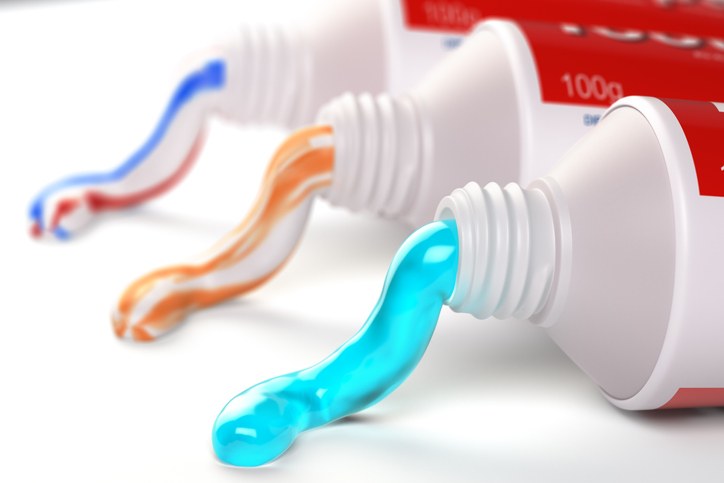- New dietary guidelines: Any changes for infants, children, and teens?
- Shingles of the eye can cause lasting vision impairment
- Are early detection and treatment always best?
- Platelet-rich plasma: Does the cure for hair loss lie within our blood?
- Do adults really need tetanus booster shots?
- Why your sleep and wake cycles affect your mood
- Coping with the coronavirus pandemic for people with anxiety disorders
- Thinning hair in women: Why it happens and what helps
- Strategies to promote better sleep in these uncertain times
- Good for your teeth, bad for your bones?
آخرین مطالب
امکانات وب

Regular brushing and flossing are the cornerstones of good oral health. But what if you learned that your toothpaste was good for your teeth, but bad for your bones? That possibility has been raised by a recent study. The cause of this unprecedented finding may be triclosan, an antibacterial agent added to toothpaste to reduce gum infections and improve oral health. However, it may actually be causing more harm than good.
Rethinking a popular germ killer
Triclosan is an antibacterial agent that’s been around for decades. Not only has it been used in soaps, hand sanitizers, and deodorants, but it’s found its way into cutting boards, credit cards, trash cans, and, yes, toothpaste.
Adding triclosan to all of these consumer products allowed marketers to slap “antibacterial” on the packaging and emphasize this feature of the product. Though unproven, the implication is that products containing triclosan (or other antibacterial agents) might prevent serious infections.
But for many years, studies done in animals or on human cells in the lab have raised concern about whether all this “cleanliness” might have some unintended — and negative — consequences, including:
- promoting the development of resistant bacteria (see my previous post about this)
- interfering with normal hormonal function: in animal studies, triclosan has been linked with abnormal thyroid function and bone mineral density (a measure of bone health and strength)
- more allergic reactions, perhaps because lowering exposure to bacteria may prevent the immune system from developing as it should
- impaired muscle function, as noted in mice, minnows, and human heart cells in the lab
- uncertain environmental impact, since many products containing triclosan wind up in wastewater and, eventually, into bodies of water. And there’s this disturbing observation: it can survive treatment at a sewage facility.
If triclosan is bad for humans, the problems it causes could be widespread: one study found that more than 75% of the public have detectable amounts of triclosan in their urine. While we are still uncertain of the health impacts of this, if any, the FDA has taken action in recent years to curtail its use.
Triclosan’s fall from grace
First, the FDA asked companies using triclosan in their cleaning products to produce research demonstrating that they were more effective than soap and water. In 2016, when no such proof had been offered, triclosan was banned from soaps sold to consumers. The following year, it was banned from healthcare cleansers. And, in 2019, the FDA announced that triclosan would be banned from consumer hand sanitizers as of April 2020.
What did the new research find?
In the study, researchers reviewed data from more than 1,800 women and found that
- Those with the highest levels of triclosan in their urine had the lowest measures of bone density.
- Osteoporosis (as measured by bone density) was most common among those with the highest urinary triclosan levels. Osteoporosis is a condition in which the bone density is so low that fracture risk from even a minor fall or injury is increased.
- The connection between low bone density and urinary triclosan was stronger for postmenopausal women than among younger women. This may be important, since menopause is a time when bone density often falls dramatically, and postmenopausal women have the highest rates of osteoporosis-related fractures.
Now what?
This is just the latest research to raise concerns about the safety of triclosan. My guess is that it won’t be long before the FDA bans its use in toothpaste, especially if no new studies find that it’s particularly beneficial. The impact of such a ban at this point may not be large; most toothpaste makers have stopped putting triclosan in their products.
To be fair, a previous review of research in 2013 concluded that there was less plaque, gum inflammation, and gum bleeding among users of a toothpaste containing triclosan compared with users of toothpaste without triclosan. However, the authors noted that “these reductions may or may not be clinically important.” There was also a small reduction in dental cavities among users of the triclosan-containing toothpaste, and no safety concerns were raised over a three-year period of use.
Still, the more recent studies may have tipped the balance. Triclosan’s days in consumer products may be numbered.
The bottom line
Check your toothpaste when you next brush. If you see triclosan listed among the ingredients, you may want to switch to a brand without it, at least until you can discuss it with your doctor or dentist.
Follow me on Twitter @RobShmerling
Harvard Health...برچسب : نویسنده : harvard بازدید : 133
